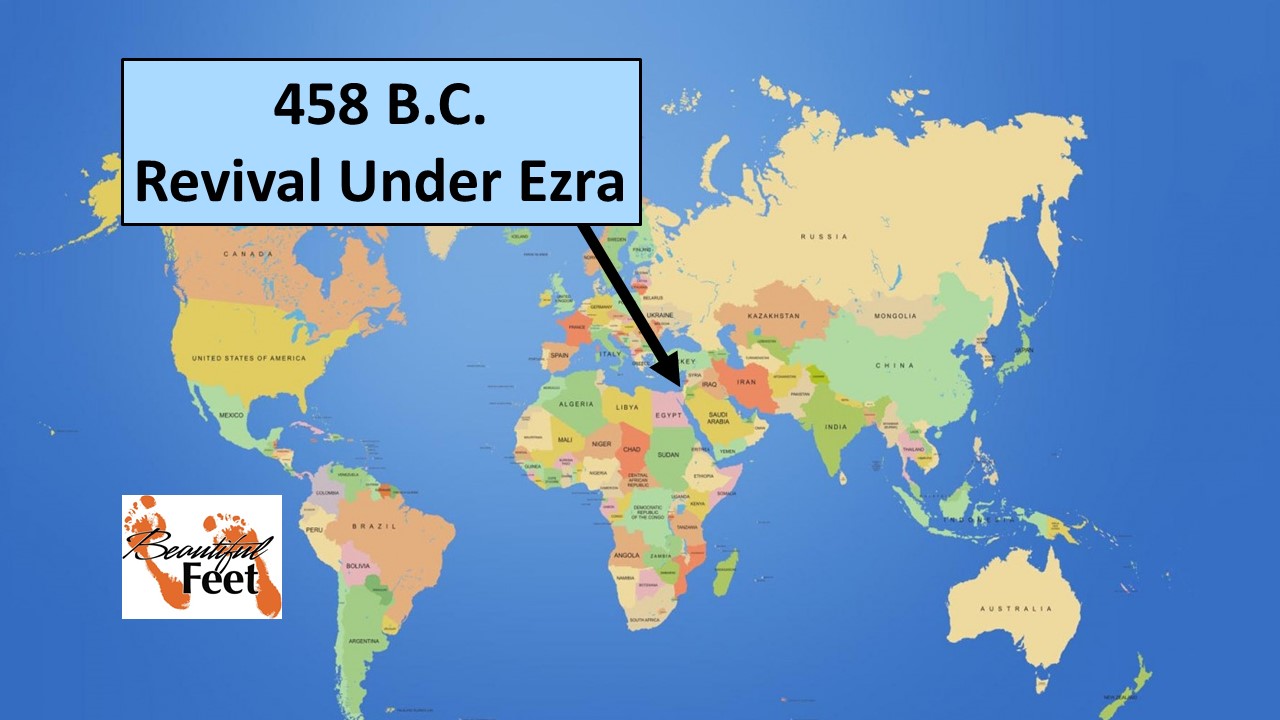

Introduction
We strongly recommend the reading of the Revival Under Zerubbabel, Haggai, and Zechariah prior to reading this revival account.
With there being debate as to the chronological flow through the books of Ezra and Nehemiah, we have decided to write a third revival account, specifically focusing on the uniqueness of what occurred under Nehemiah’s revival efforts. That account can be read with this link.
Background
The city of Jerusalem was destroyed by the Babylonians in 587 B.C., and except for a small number, most of the Jews were forcefully deported to Babylon where they were enslaved for 70 years. At the end of those 70 years they were granted permission to return to Jerusalem to rebuild the temple, as well as to build the walls around the city. This return migration occurred in three main groups:
1. Group led by Zerubbabel: this group of 49,897 people returned in 539 B.C. (Ezra 2:64-65).
2. Group led by Ezra: the second group of 1,754 returned in 458 B.C. (Ezra 8:1-20).
►Zerubbabel dedicated the new temple in 515 B.C., so Ezra’s group arrived around 57 years after the temple’s dedication, and what they found was that spiritual reform was desperately needed (Ezra 9:1-2).
3. Group led by Nehemiah: this group returned in 444 B.C. with an unknown number of people, accompanied by soldiers (Nehemiah 2:9-10).
This post will focus on the second return migration, led by Ezra.
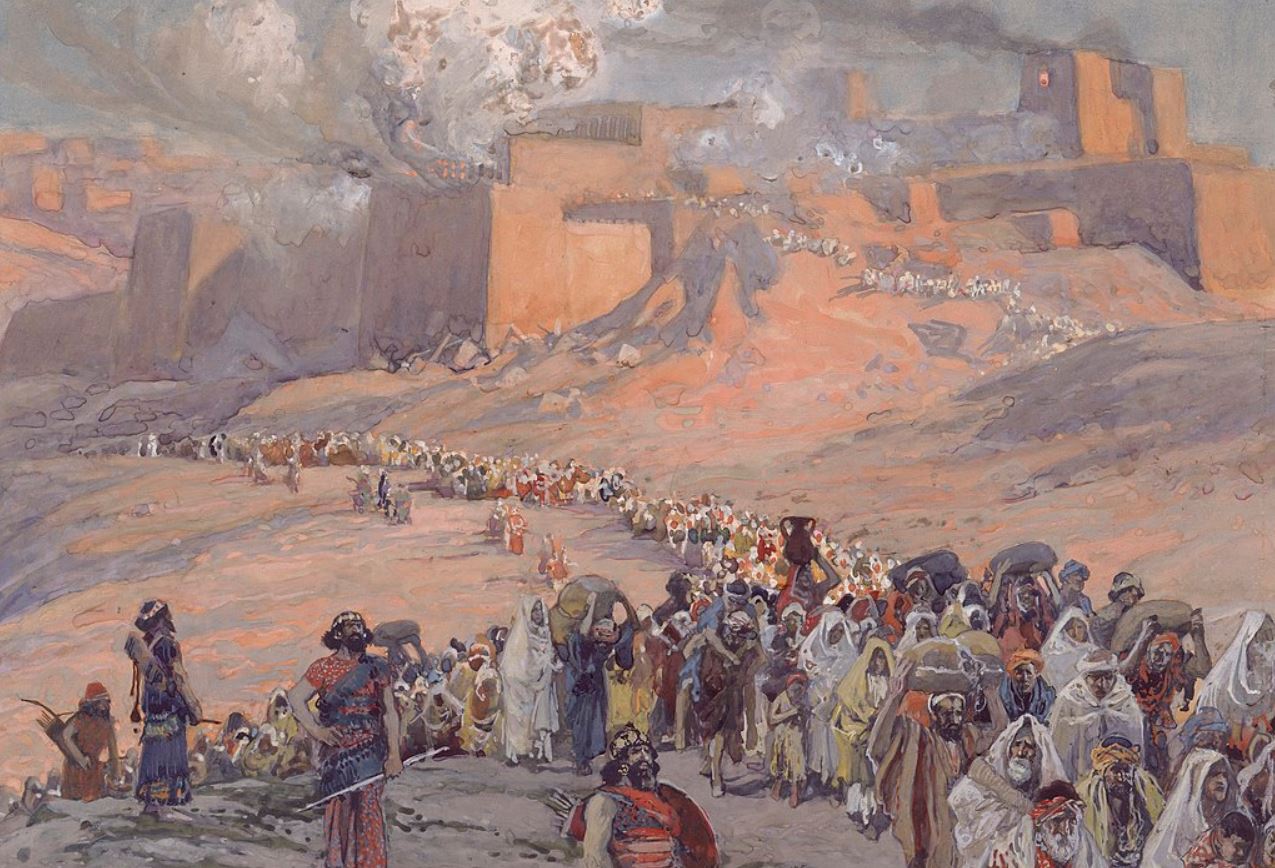
Jews exiled from Jerusalem in 587 B.C.
Permission Granted for the Second Migration
Ezra was an exceptional priest living in Babylon, having a thorough knowledge of the Law of Moses. God favored him by moving the heart of the Persian king to allow him the honor of leading another group of Jews to Jerusalem. Ezra’s mission was different from Zerubbabel’s (building of the temple) and Nehemiah’s (building of the walls around Jerusalem). Ezra’s mission had six objectives:
1. To inquire of the spiritual conditions of Jerusalem and Judah (Ezra 7:14).
2. To carry a donation from the king to Jerusalem. This also included a freewill offering which was given by the people (Ezra 7:15-20).
3. To check on and maintain the Temple of God (Ezra 7:21-24).
4. To appoint magistrates and judges (Ezra 7:25).
5. To teach the Law of Moses (Ezra 7:25).
6. To execute judgment (Ezra 7:26).
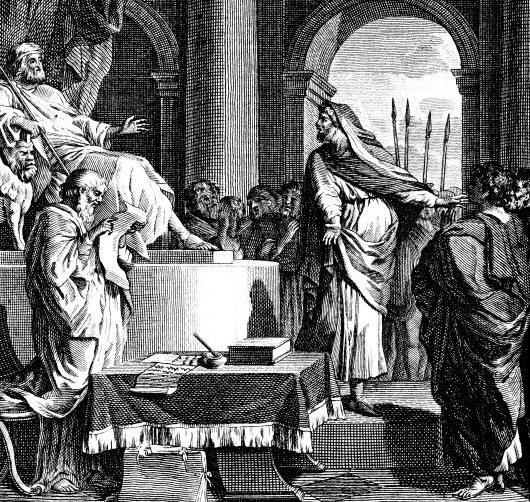
Ezra speaking with the Persian king
Leadership Transition from Zerubbabel to Ezra
The generation of leaders that followed Zerubbabel, the man who led the first migration back to Jerusalem, evidently had not maintained the quality of character, nor the fear of God, that their predecessors carried.
There was never a vacuum in leadership among the Jews who continued after Zerubbabel, as there will always be someone that will step in to fill a void in leadership. The question to be asked, however, is what was the heart condition of the individuals who assumed leadership roles after Zerubbabel?

Spiritual Climate of Jerusalem
Between the time the first group arrived in Jerusalem and when Ezra’s group arrived, around 80 years had elapsed. There had been a time of great rejoicing immediately following the dedication of the temple in 515 B.C., but in just one generation things had changed dramatically.
Upon Ezra’s arrival in Jerusalem, after his 4-month journey from Babylon, he found that the social, moral, and religious climate was appalling. The sins of the people included
► Intermarriage with Canaanites. Even the priests, Levites, and main leaders were among those who had broken this law of Moses (Ezra 9:1; Deuteronomy 7:1-3).
► The intermarriages had led the people into following pagan rituals involving the worship of idols (Ezra 9:1-2).
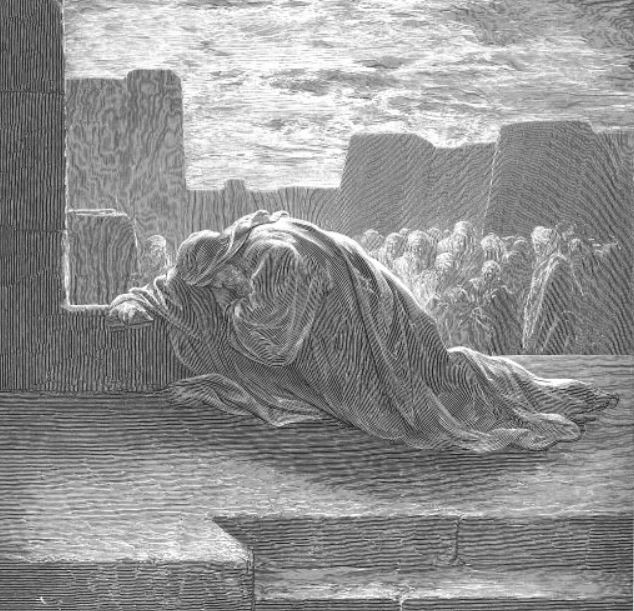
Ezra filled with grief
Ezra was so shocked that he
► Tore his clothing and mourned deeply, being filled with grief.
► Pulled the hair out of his head and beard.
► Sat down utterly shocked and appalled at what he saw happening, and remained there till the evening (Ezra 9:3).
Ezra wasn’t the only one overcome with grief due to the sins of the people. Others gathered around him, also horrified at what they were witnessing (Ezra 9:4).
Ezra recognized that if there wasn’t a genuine revival–something that would occur immediately, in the middle of this “brief moment of grace” given to them by God (Ezra 9:8)–they would again be carried away as captives. The people of Israel were already losing their distinctive identity, and were becoming more like Samaritans through intermarrying, practicing pagan rituals, and their worship of idols. In Nehemiah 13:24, we see that Jewish customs were diluted, and with it their language was being displaced.
Prayer of Confession
Ezra’s prayer of confession was one of self-identification.
► He was utterly ashamed to acknowledge their sins (Ezra 9:5-7).
► He acknowledged that God had granted them a “brief moment of grace” with their freedom from Babylon (Ezra 9:8-9).
► Even with the warnings of the prophets, the people once again abandoned God’s commands and began to marry and take up the practices of the people of the land (Ezra 9:10-12).
► He acknowledged their guilt and their defenselessness before God (Ezra 9:13-15).
Conviction Power Manifested, Leading to Repentance
Ezra’s prayer of confession evidently carried tremendous conviction power, as it produced tremendous results:
► A very large crowd of men, women, and children joined with Ezra, lying face down, weeping bitterly over their sins (Ezra 10:1).
► A spokesperson for the group, Shecaniah, confessed their sins, and on behalf of all gathered, agreed to enter into a covenant with God and to turn from their sins (Ezra 10:2-4).
Steps Taken Toward the Revival
Following the peoples’ confession of their sins, they made a public declaration (swore a solemn oath) that they would turn from their sins (Ezra 10:5-6). The next morning a proclamation was made that all people in the region must gather in Jerusalem within three days (Ezra 10:7-8).
On the third day, as commanded, the people from throughout the region were assembled. There they confessed their sins and agreed to put away their foreign wives and children (Ezra 10:9-14).
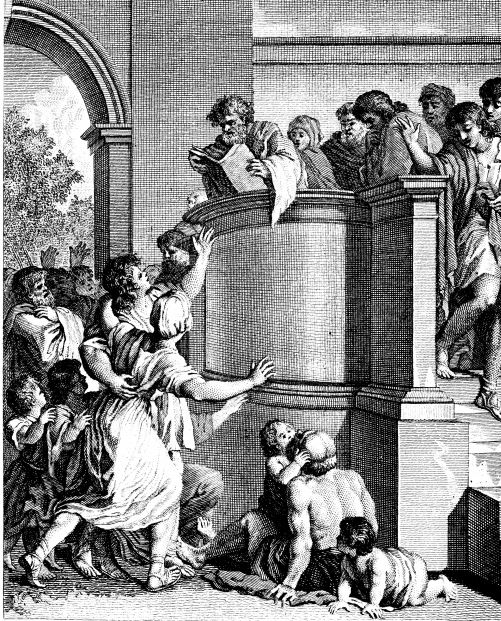
Ezra reading the law of Moses
Results of the Revival
Ezra’s revival was successful, as it strengthened the people’s resolve in following the Law of Moses, and by so doing, their actions rescued the nation from total apostasy.
► Standing on a platform, Ezra read the Book of the Law for all to hear (Nehemiah 8:1-6).
► Worship followed the reading, as well as detailed interpretation of each passage that was read (Nehemiah 8:6-8).
Celebration Because They Understood the Law
The reading of the Law initially brought great grief upon the people, leading them to mourn and weep. Nehemiah, along with Ezra and the Levites, told the people to stop their mourning, as this should be a day of celebration (Nehemiah 8:9-10).
Feast of Tabernacles (or Festival of Shelters)
As they were reading the Law, they found that they were commanded to live in shelters during the festival to be held that month (Nehemiah 8:13-14). The people obeyed the command, and it spread tremendous joy throughout the land (Nehemiah 8:15-18).
The Israelites had not celebrated like this since the days of Joshua son of Nun (Nehemiah 8:17).
Return to List of Revival Stories
Chet & Phyllis Swearingen:
Office: (260) 920-8248
romans1015@outlook.com
Beautiful Feet
P.O. Box 915
Auburn, IN 46706

